Along with the legendary cassis liqueur, my rustic blackcurrant jam recipe is one of the first things I'll make when I have a lot of fruit. This is an easy, rustic fruit preserve that's low on sugar and needs no pectin.
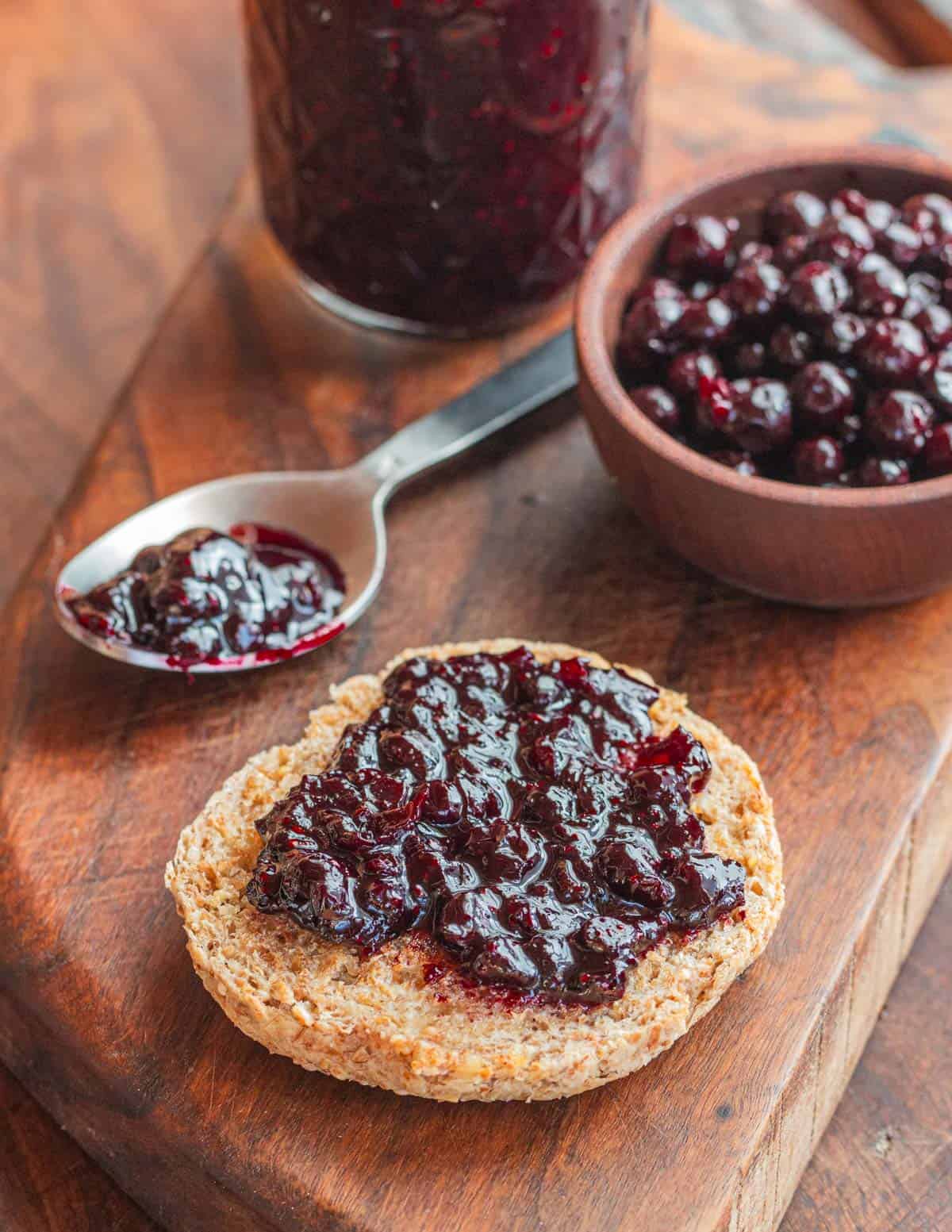
What Does Blackcurrant Jam Taste Like?
Black currants have a rich, woodsy flavor that's difficult to explain. You might imagine them as a sour blueberry with a stronger flavor.
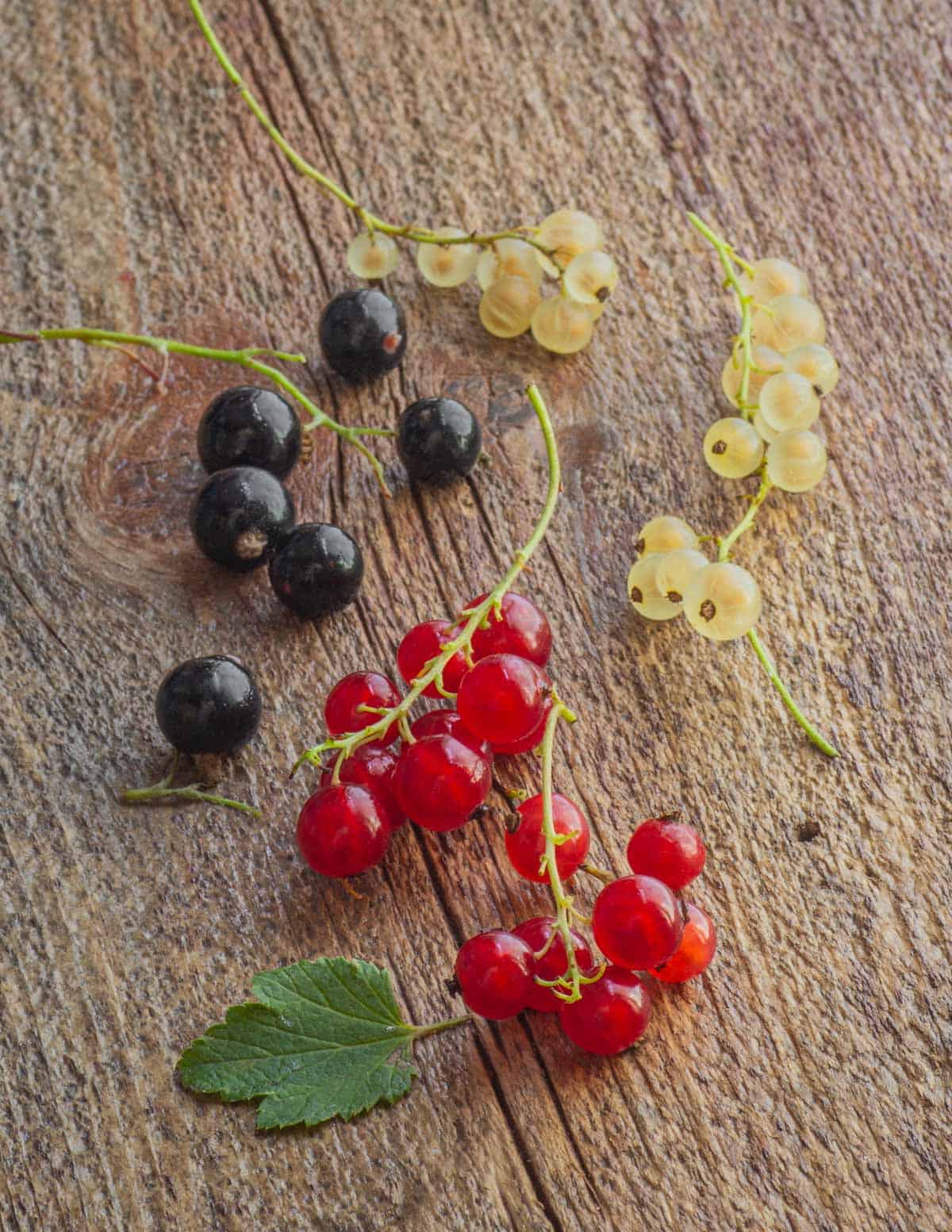
Perhaps the most important to know is that black currants taste unlike all other currant varieties and are an acquired taste for some. Red, white, and pink currants all have a bright flavor more comparable to raspberries.
Chef's Notes
- Black currant preserves are very popular in Europe. If you have friends or neighbors from there, especially Eastern Europe, save a few jars to give them for the holidays.
- If you haven't made it, skip the jam and make Blackcurrant Liqueur first. If you want, you can combine currants leftover from making cassis to use the jam. Mix the fresh currants with equal parts leftover currants.
- I prefer my preserves spreadable. The secret with currant preserves is to gently puree them just to break the fruit up with a hand blender or food processor.
- Adding a splash of vinegar ensures a low pH so you can keep the sugar at a minimum.
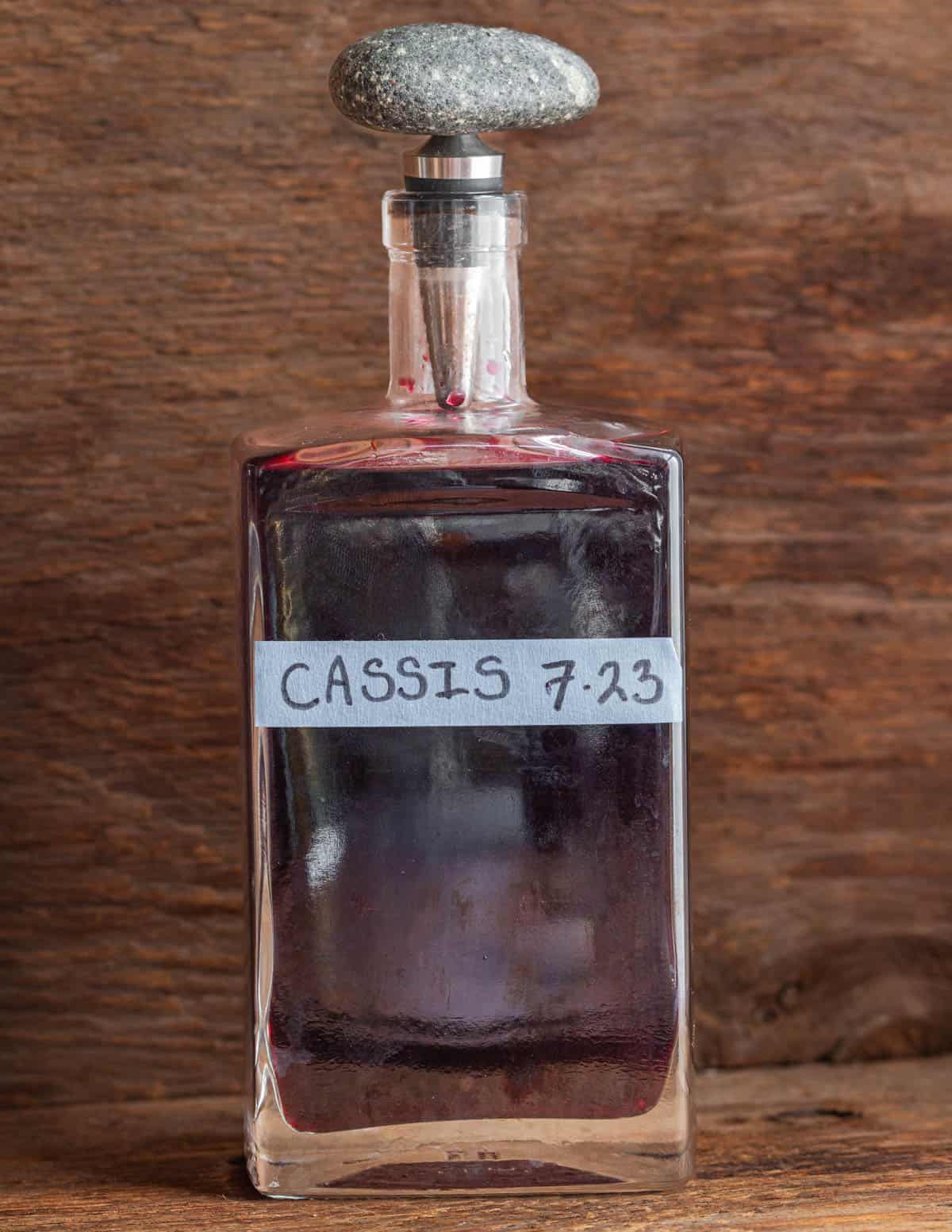
How to Make Blackcurrant Jam
Compared to some other preserves, making black currant jam is easy. To keep the pH low, first you cook some sugar with vinegar. I like to use homemade vinegar made from the fruit I'm cooking with. You can use red wine vinegar instead, or make your own homemade vinegar.
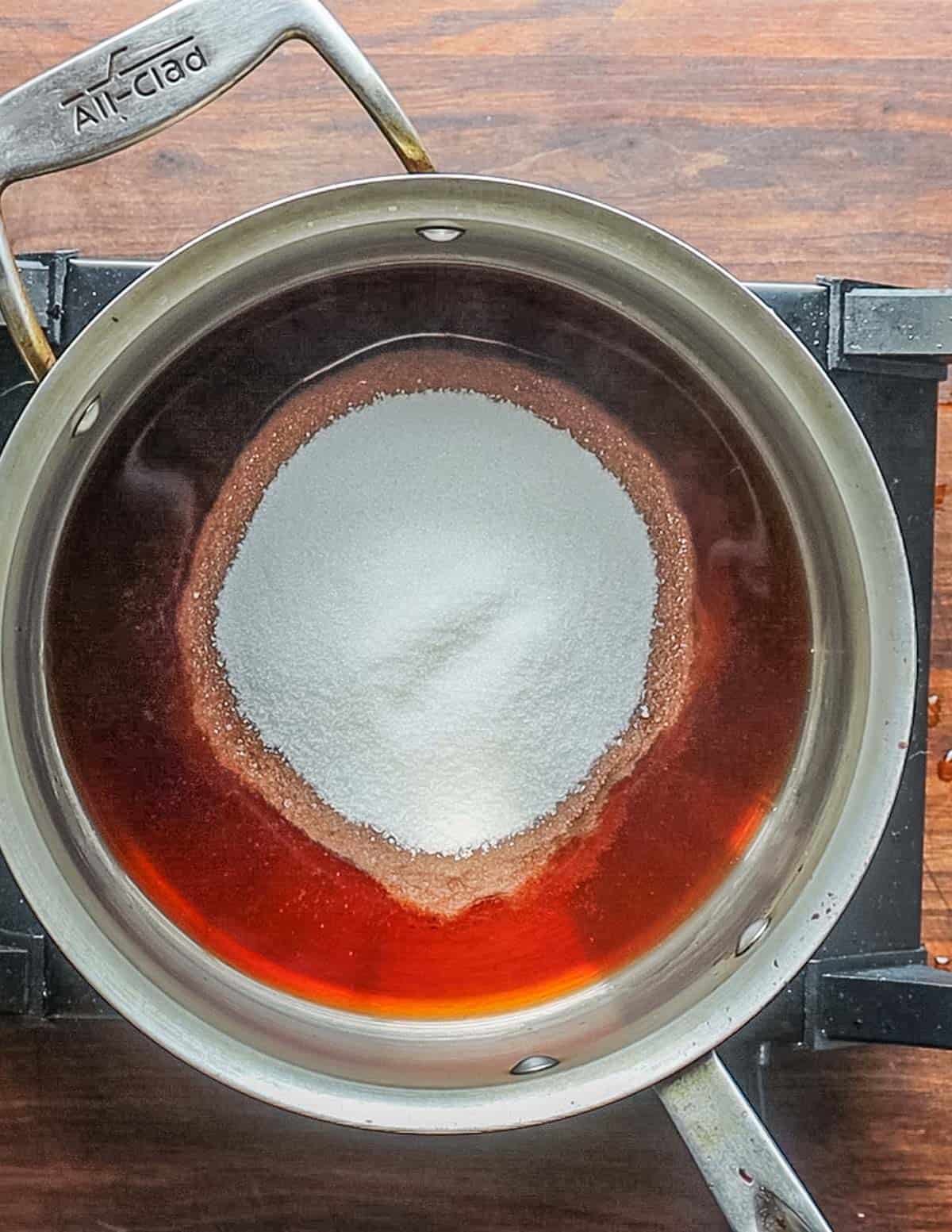
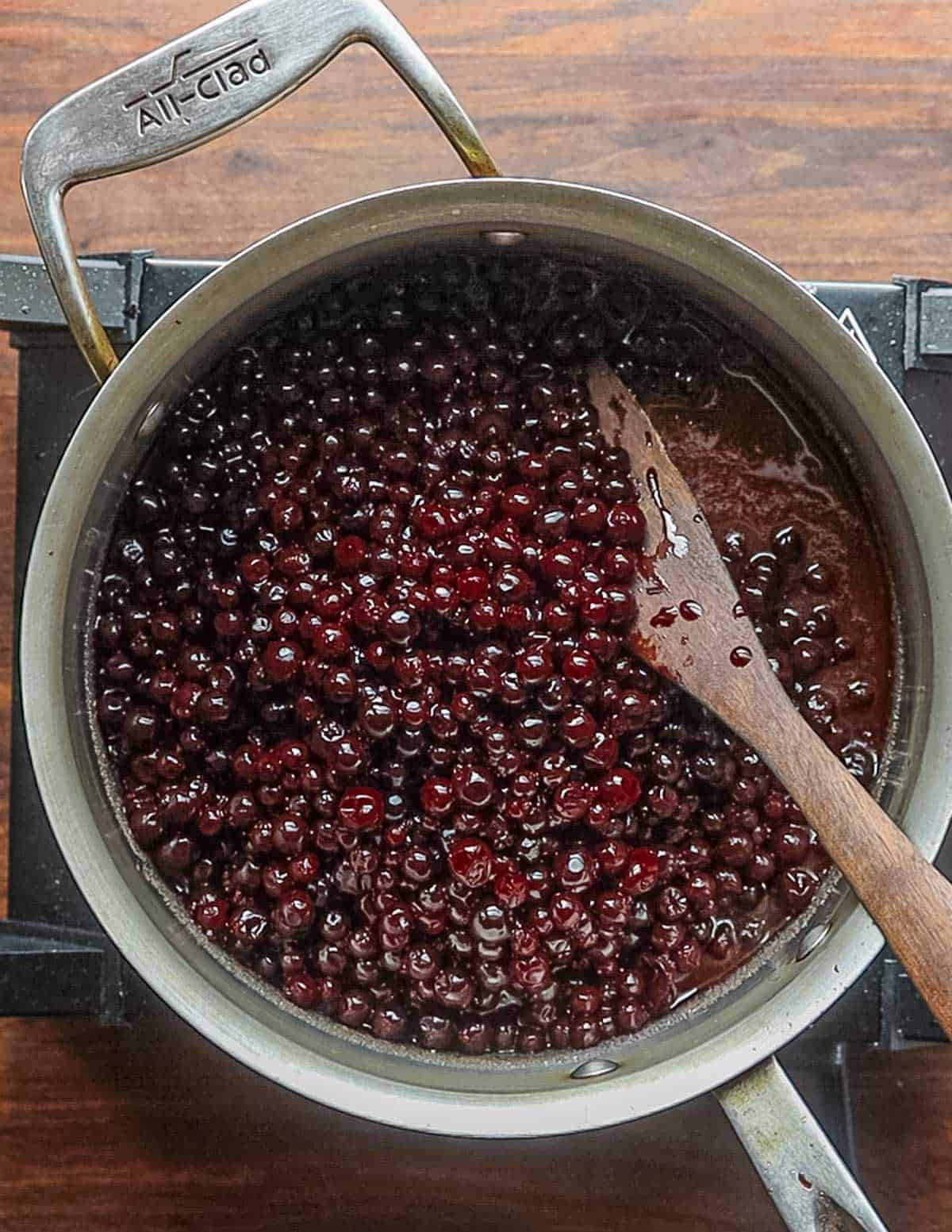
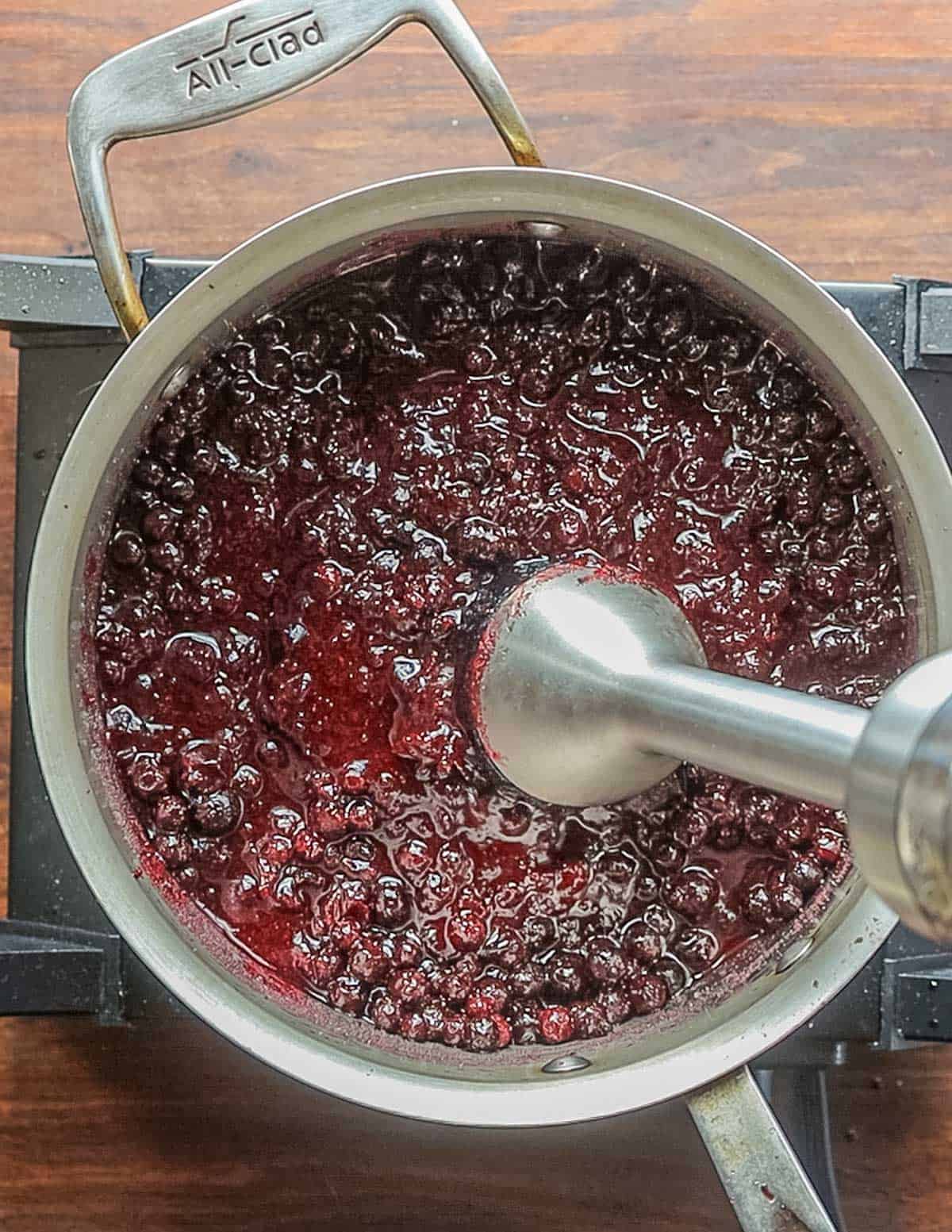
Bring the ground fruit mixture to a boil. I also like to add a splash of vanilla if I have some, but it's optional. You'll cook the jam for about 15-20 minutes. You want to get it to a temperature between 215-220 F ideally. Pureeing the fruit makes it thick no matter what though, so don't worry too much about the exact temperature.
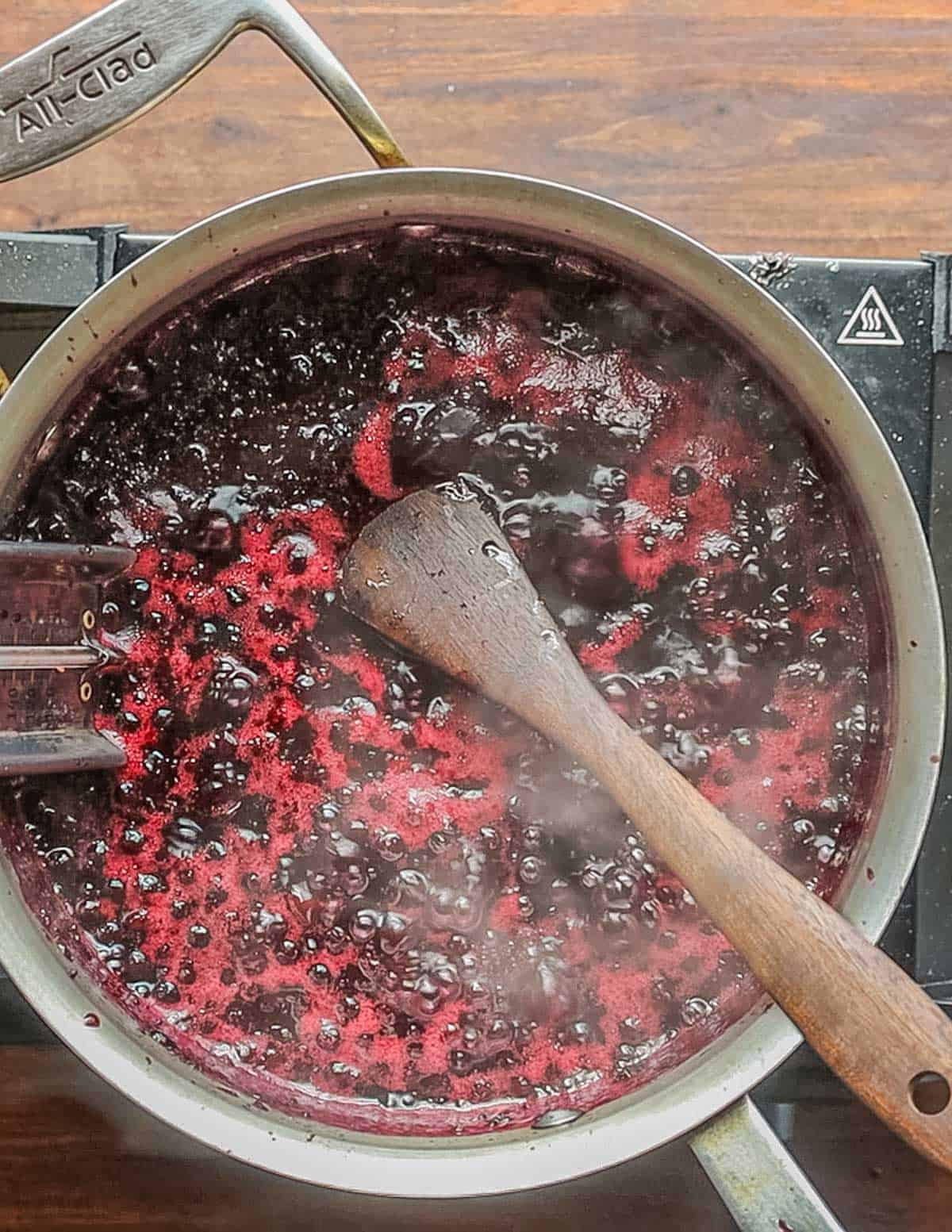
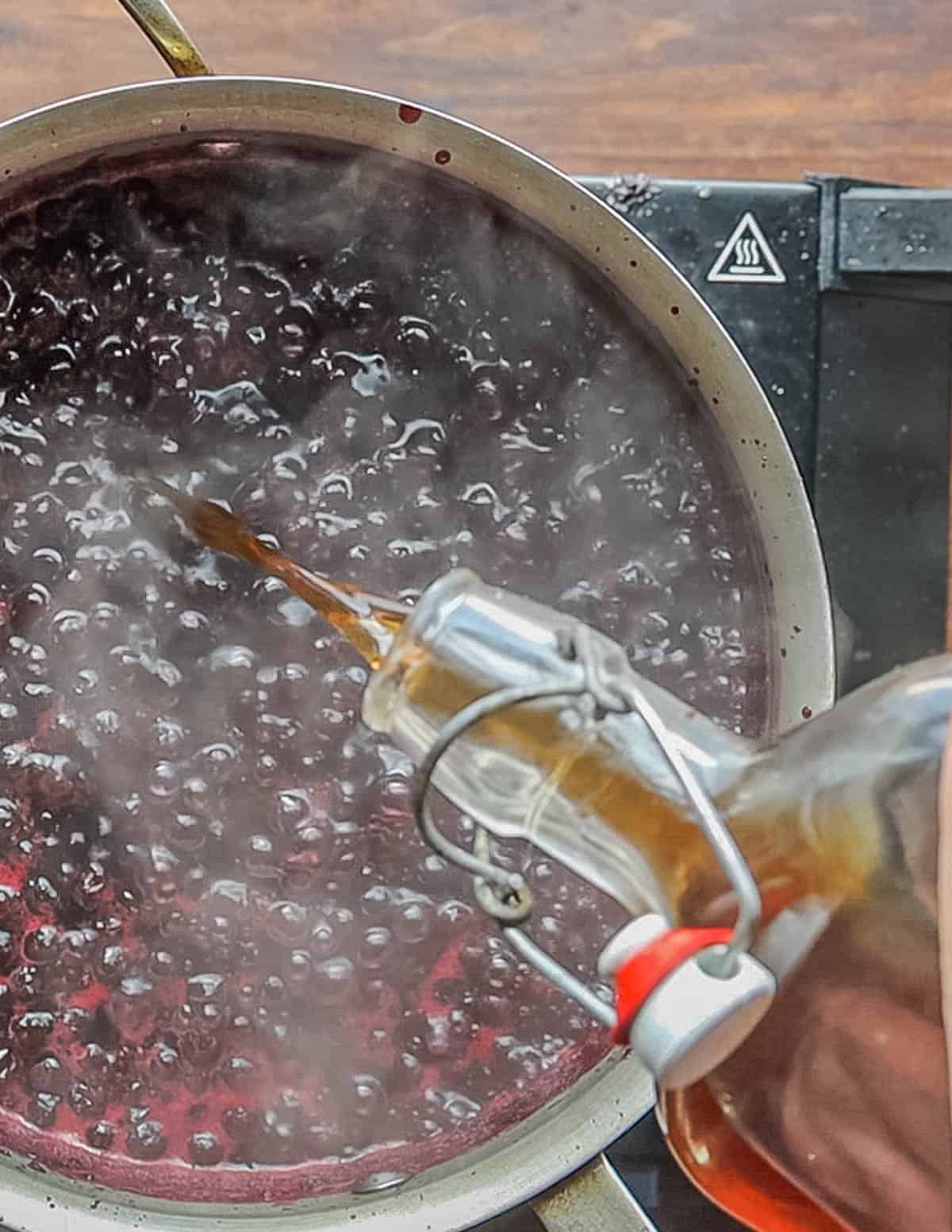
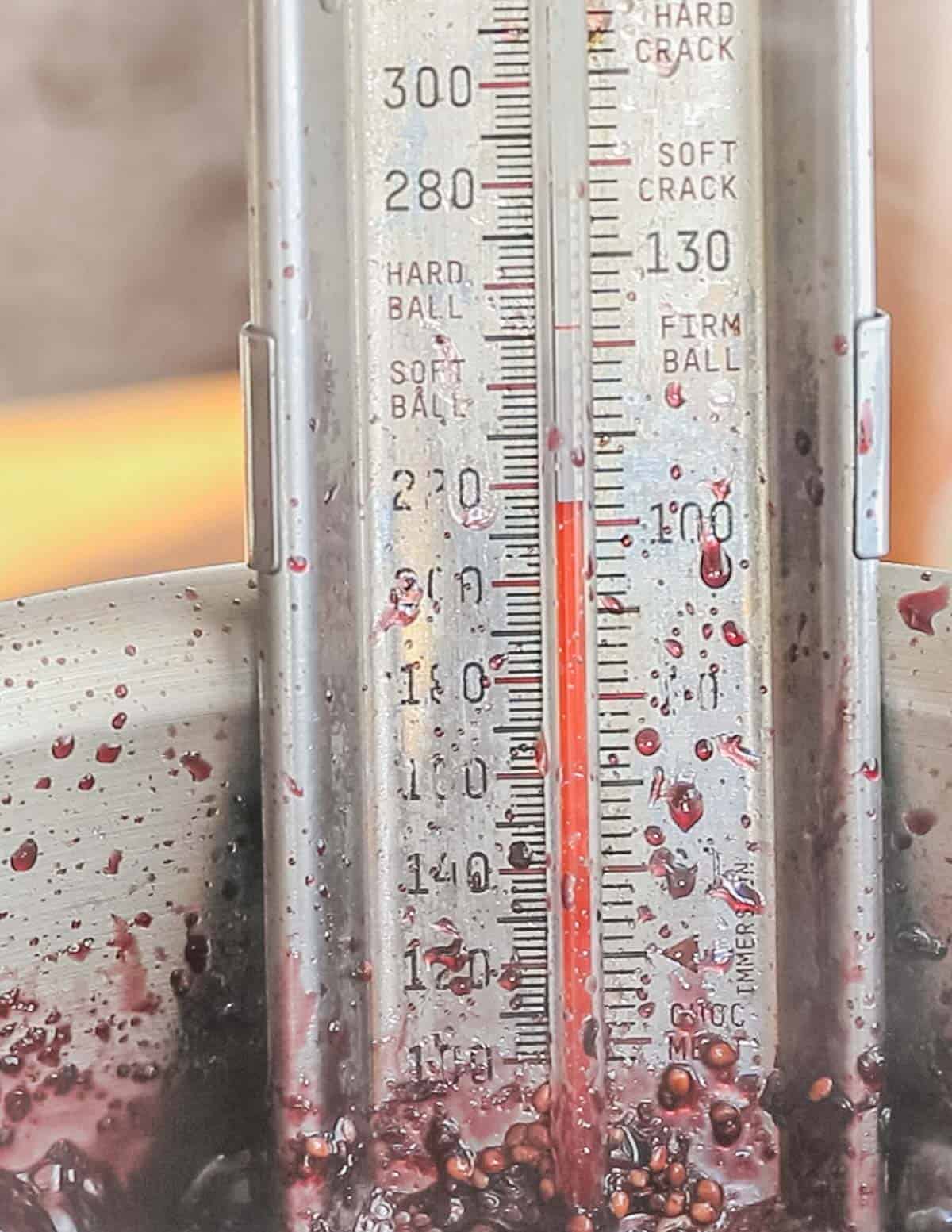
Once the jam is thickened nicely, and somewhere in the area of 215F-220F, lemon juice is added and the jam is portioned into jars. From here it can be water bath canned, or frozen.
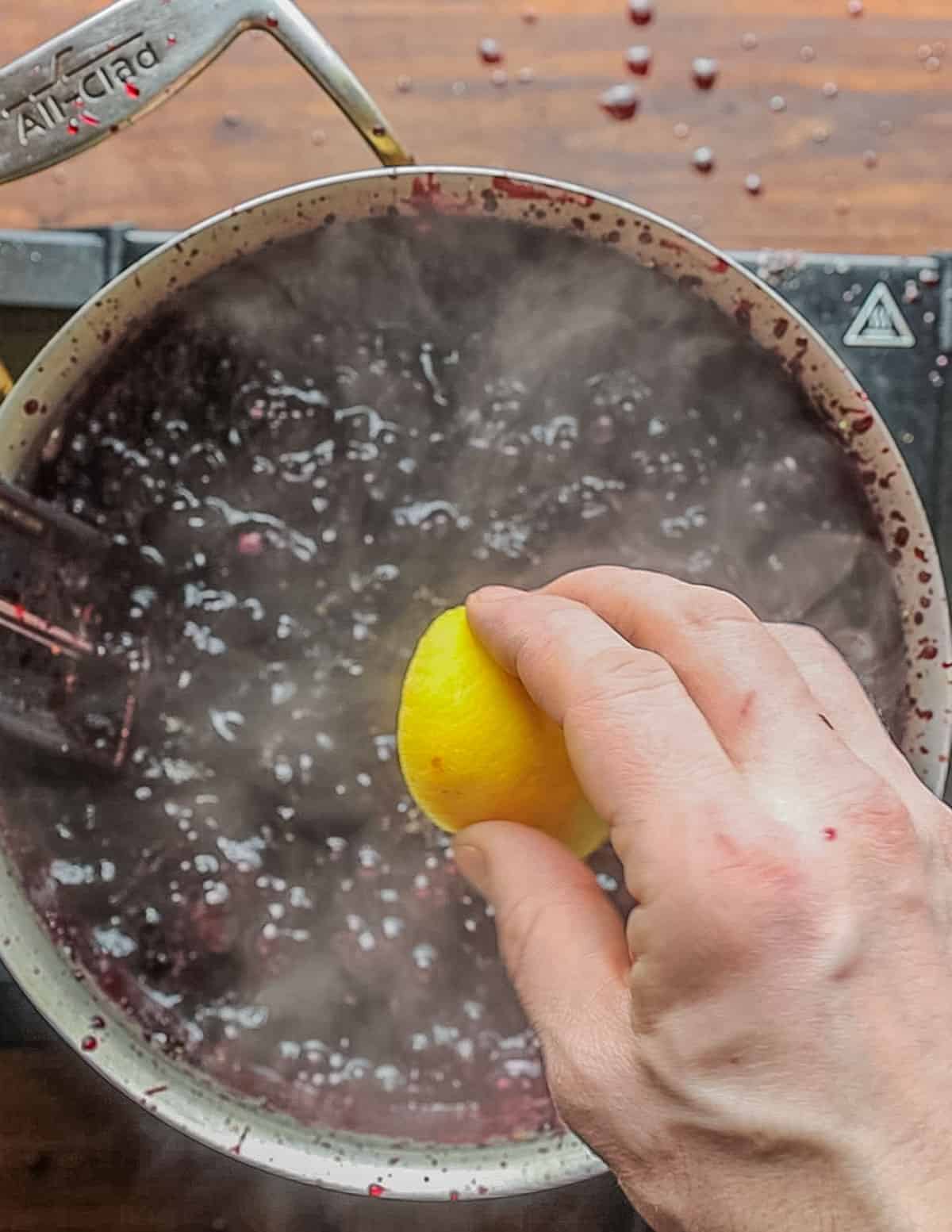
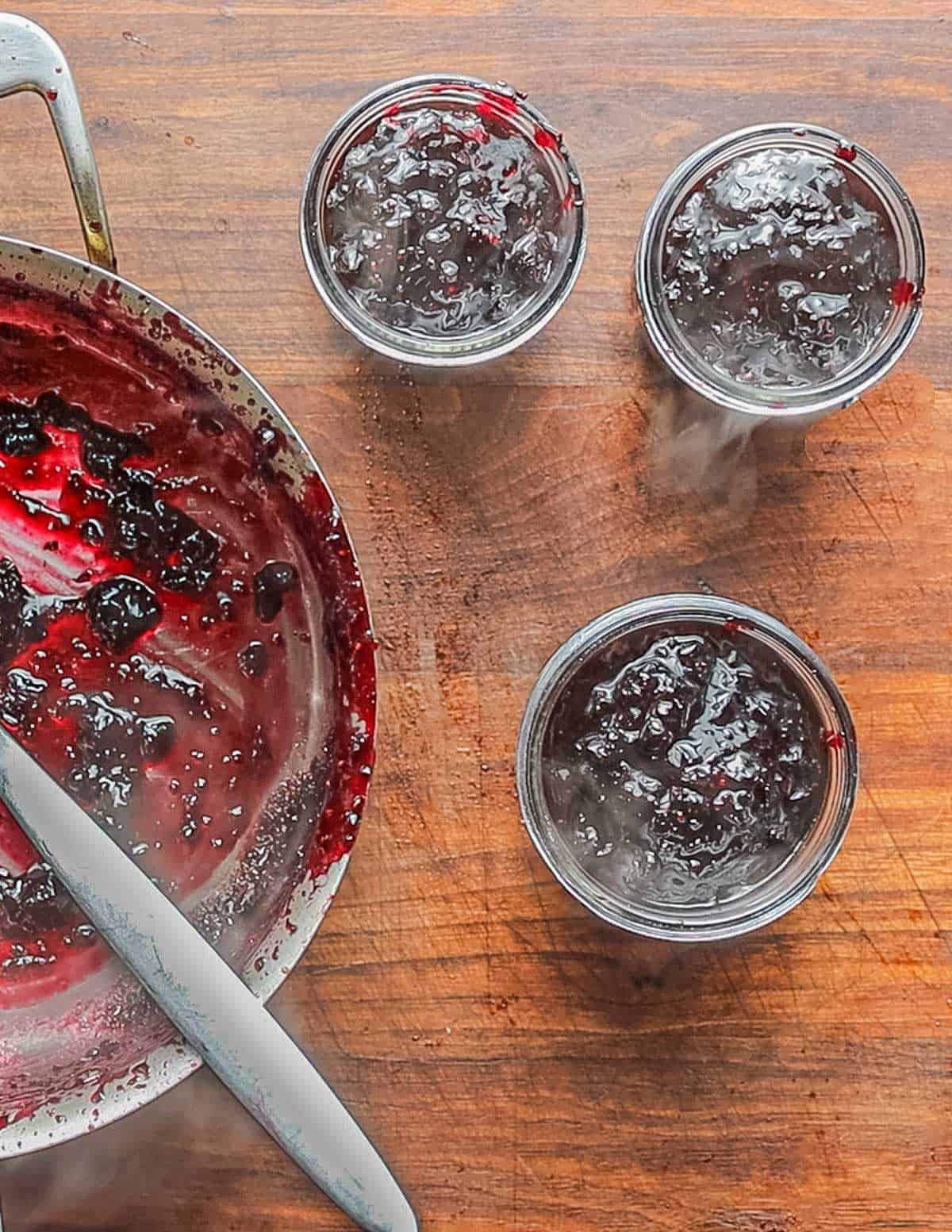
Canning Black Currant Jam
Canning the jam is easy. It's a small batch, so I process the jars in a large pasta pot with a canning insert. Simply bring a large pot of water to a boil. The pot needs to be filled enough so that the jars are all covered by at least 2 inches of water.

Add the jars to the pot, cover, and boil for 10 minutes. After cooking, remove the jars and cool. Finally, label, date, and store the finished canned currant jam in a pantry.

Recipes with Black Currant Jam
- Traditionally, currant preserves are often used in baking. A jarful of currant jam makes a great layer for the middle of just about any cake.
- One of my favorite things to do with jams is add them to quick breads like muffins. I usually omit some of the sugar from the recipe I'm using.
- If you simmer the jam in a splash of chicken stock and whisk in a tablespoon of soft, unsalted butter it makes a nice sauce for roast chicken or game. Season the sauce with a splash of red wine vinegar to taste. Chopped fresh tarragon or lemon thyme and fresh cracked black pepper are good added as well.

More Interesting Fruit Preserves
Rich Black Currant Jam (Low-Sugar, No Pectin)
Equipment
- 1 Large pot or waterbath canner
- 4 Half pint mason jars with lids
- 1 Tongs
- 1 Deep heavy, non-reactive pot 3-4 quart size, preferably stainless steel, for cooking the jam
- 1 Candy thermometer or instant read thermometer in a pinch
Ingredients
- 2 lbs Roughly 6 cups blackcurrants fresh or frozen
- 1.5-2 cups Granulated sugar preferably organic sugar
- ¼ cup Rice wine vinegar or homemade vinegar from fruit
- 1 Lemon for zest and 4 teaspoon juice
- 1 Orange for zest
- 2 teaspoons Wild vanilla extract optional
- ¼ teaspoon kosher salt
Instructions
Make the Jam
- Bring the sugar, salt and vinegar to a simmer and cook for 2 minutes. Add the currants and warm them through. Add a splash of vanilla extract if using.
- Gently pulse the fruit with a hand blender to break it up. You can also buzz them in a food processor before cooking. If the fruit isn't broken up, it won't be spreadable.
- Bring the fruit mixture to a boil and cook until the temperature of the jam reaches 215 F-220F. This is a rustic, easy recipe, and pureeing ensures it will always be thick. This means you don't need to worry if it's difficult to get it to 220F. As long as it's thick, it will be good.
- As the pot boils, stir it regularly to make sure it doesn't stick to the bottom and burn.
- Once the jam is thick and you're near 215-220 F, turn the heat off, beat in the lemon juice, lemon and orange zest.
- Spoon the jam into clean mason jars, clean the rims of the jars with a paper towel and screw on the lids.
Canning the Jam
- Prepare a water bath canner. Bring a large pot of water to a boil and add the jars of jam. Cover the pot, set a timer for ten minutes, and allow the jars to boil.
- Remove the hot jars using tongs and allow to cool. Wipe the jars dry, label, date, and store in a pantry after inspecting all the jars to make sure they're sealed and the lids don't pop up when pressed.
- I've opened jars 3-4 years old that were perfectly fine.


Mary
This jam recipe is absolutely delicious! I used the same amounts as your recipe but substituted the granulated sugar with coconut sugar which worked really well...and my own home grown lemon juice and zest! In UK.
I am going to enter in our local agricultural show jam entries on behalf of our local primary school allotment as that is where the fruit is from. We grow fruit and vegatables with the children....Great fun!
So very grateful...Next gooseberry jam. So exciting...Enormous thanks x
Laura
Thanks for the detailed recipe and explanations. Just curious, what is the logic behind the statement "Adding a splash of vinegar ensures a low pH so you can keep the sugar at a minimum"?
Thanks in advance!
Alan Bergo
Adding vinegar allows you to add less sugar to preserves as it lowers the pH. This makes it more shelf stable. I can't stand overly sweet preserves, so I developed many recipes like this for fruit preserves that include acid over the years for my restaurant menus. Not only does it make it more shelf stable, it also makes it easier to use in savory applications, like sauces for game, etc.
Janet
I made this jam this fall, liked it very much , I added 3 cups of sugar and two jars of Blackcurrant jelly made in 2023 that was too soft a set. I hate to waste good ingredients.
Do you have a recipe for gooseberry jam . ?. Thank you.
Alan Bergo
Hi Janet. Glad it worked for you. You can use gooseberries in place of currants here-no prob. As gooseberries are a little juicier you may need to evaporate a little more water from it.
J. Dufour
Such a delicious jam....thanks for sharing your recipe!
Alan Bergo
Hey thanks J, appreciate you commenting.
Leon Korkin
I made 3 jars of black currant jam thanks to a friend who donated over 2 lbs of fresh sweet currants. Followed recipie except did not add vinegar, vanilla or lemon, only sugar and little water. It came out absolutely fantastic, thanks for very detailed instructions!
Alan Bergo
Hey thanks Leon, yes those flavorings are fine to skip, but I’ll definitely add them if I’m using some currants that have been soaked to make Cassis. The key is buzzing them up a bit to help thicken it.
Julie
I just finished making this and am listening to the "thwuck" of my jars as they seal. I had an epic fail with black currant jam (read- pasty glop) this year and since I pick currants from others' gardens, I have to be extra careful. I ran across your recipe which looked very different. I was, of course, short currants, so added some blueberries, which are more than plentiful this year. The scrapings from the pan tasted heavenly, so I am highly hopeful. Thanks!
Alan Bergo
Hey thanks Julie. I really like this recipe. Easy and approachable, and I don’t feel like my teeth will fall out after eating it.
Rebecca Baczewski
This was amazing! I didn't have an orange, so I substituted with 1/8 teaspoon of organic orange powder. I have loads of black currants, so will try you liqueuer next.
Alan Bergo
Hey thanks Rebecca. You could also add a splash of cointreau or orange liqueur. The cassis is one of my favorite things to make with fruit.
Linda B
Very delicious jam. I had the 3 pounds of fruit so I did half again on the recipe except only one orange zested And one lemon zested. I use 2 1/4 cups of granulated sugar for the 3 pounds. I use 6 teaspoons of lemon juice. Then, for the rice wine vinegar, I used 1/2 cup of cassis liquor, your recipe, made last year. Still had a bit left. And I also used 1/4 cup of your recipe maple sap vinegar. When I make that, I always use just a tad more maple syrup in it. It is a year or too old and still taste fantastic.
We’re very pleased with your black current Jam and it was fun to use the other homemade ingredients in it. I was hoping not to have another saucy result and this worked well.
Jennifer
Probably the best jam I've ever tasted from currants and I love how little sugar is in it compared to others. I added some lemon thyme chopped at the end and it really came through nicely. Really happy with this and plan to give jars as gifts this year.
Norma Kenward
This made a delicious very full flavoured currant jam! I was curious and hesitant about using red wine vinegar - and when I was simmering it I became ever more hesitant because of the strong vinegar smell. But I persevered - and it does not taste red-wine-vinegary at all! It’s just a very deep black currant flavour, not overly sweet. I added the vanilla but it is not really discernible. I also really love the orange and lemon zest/fresh lemon juice.
I’ll be making this one again!
Alan Bergo
Thanks Norma.
Mtn Man
Do you leave the remnants of the flower intact or do you painstakingly remove them?
Alan Bergo
Hi Mtn Man. No I use them as-is. Pick them of the plant and they're ready to go, and that's how they're used in all traditional recipes I've seen. Generally speaking, I avoid anything I'd describe as "painstaking".
Lonelle
I have questions! I've never seen salt in a jam recipe before; is it essential here? I'm not anti-salt, just curious how much of a difference it makes in the final flavor.
And, what's the reason for waiting until the end to add the lemon juice, rather than adding it with the vinegar? Thanks!
Alan Bergo
I almost always add a pinch of salt to my jams and jellies. It's not a lot, just a tiny pinch. You can skip it if you want-you're not going to taste it. A tiny pinch of salt helps balance flavors, you won't know it's there, but it helps, especially as jellies and jams typically contain a lot of sugar.